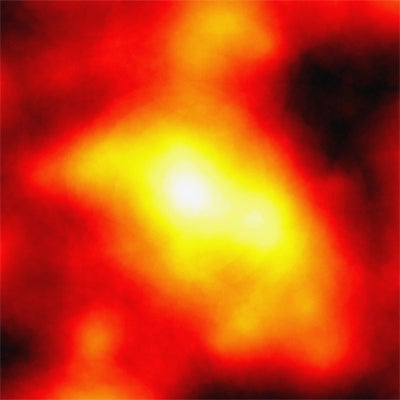The invisible and perplexing material that makes up at least 80 percent of our universe’s mass keeps leaving clues for astronomers, but not enough to solve its identity. While scientists do not know yet what makes up this dark matter, one search method has given tantalizing hints over this past year.
Scientists believe that when two dark matter particles collide they destroy themselves — a process called annihilation — and create other familiar particles. Among this shower of particles is gamma radiation. And nearby dwarf galaxies are an ideal place to look for dark-matter-produced gamma rays. “[Dwarf galaxies] are calm, quiet places; we don’t know any reason why they should be emitting high-energy gamma rays on their own,” says Carnegie Mellon University’s Alex Geringer-Sameth, lead scientist of one of the searches. “Therefore, if you see some gamma rays coming from one of these dwarf galaxies, it is very exciting because it could be a sign that dark matter is annihilating within it.”
This past year, a sky survey uncovered nine dwarf galaxies within 1 million light-years of the Milky Way. And one of the galaxies from this Dark Energy Survey (DES) was a prime dark matter target: Reticulum II.
Geringer-Sameth’s team and another — Dan Hooper and Tim Linden, both of the University of Chicago — used seven years of data from the Fermi Gamma-ray Space Telescope to find that this dwarf galaxy looks a bit brighter than it should in gamma rays. “We provide an indication that something is emitting gamma rays from the direction of Reticulum II, and that something seems to be consistent with dark matter annihilation,” says Geringer-Sameth. “While the signal from Reticulum II is tantalizing, it would be premature to conclude it has a dark matter origin.”
Hooper and Linden calculated a similar chance that the signal has dark matter origins. “You might call that evidence; you won’t call that a discovery,” Hooper says of the studies. “We really need more data to resolve the issue.” Scientists expect DES to uncover some 20 more nearby dwarf galaxies, and future surveys will find even more. Scientists will then be able to compare archived Fermi gamma-ray data with these dwarf galaxies to see if they have a signal similar to Reticulum II’s.










